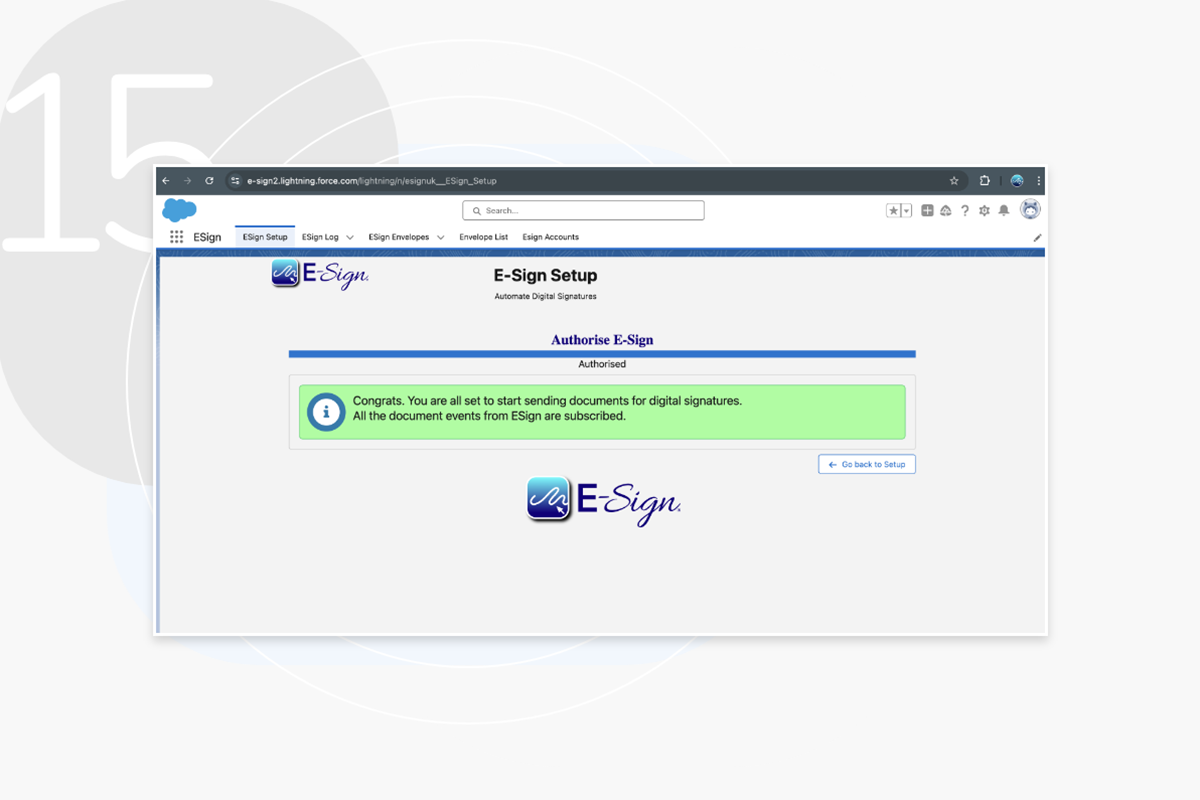Home | Resources | Help Center and How To Guides | Salesforce
Follow our detailed step-by-step instructions to install the E-Sign app on your Salesforce account.

Once you have downloaded the E-Sign plug-in, click ‘Install for Admins only’.
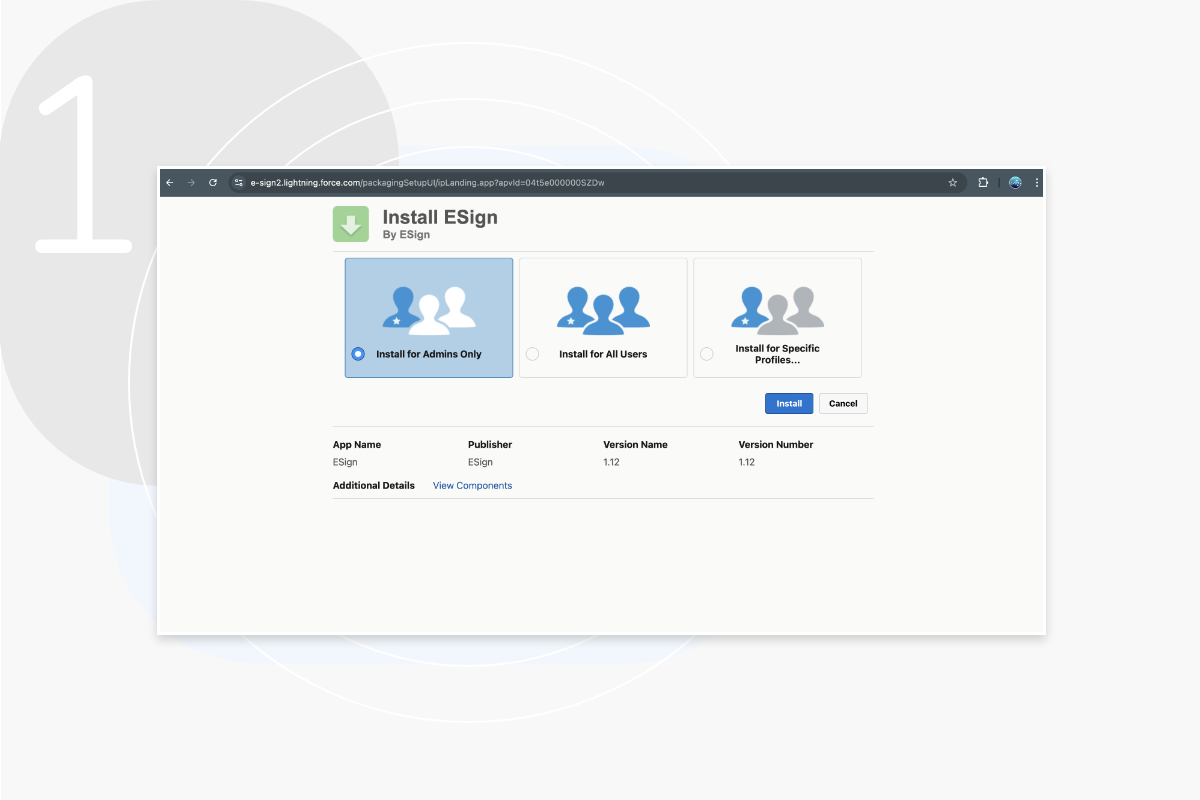
Ensure that you grant access to the third-party E-Sign platform.
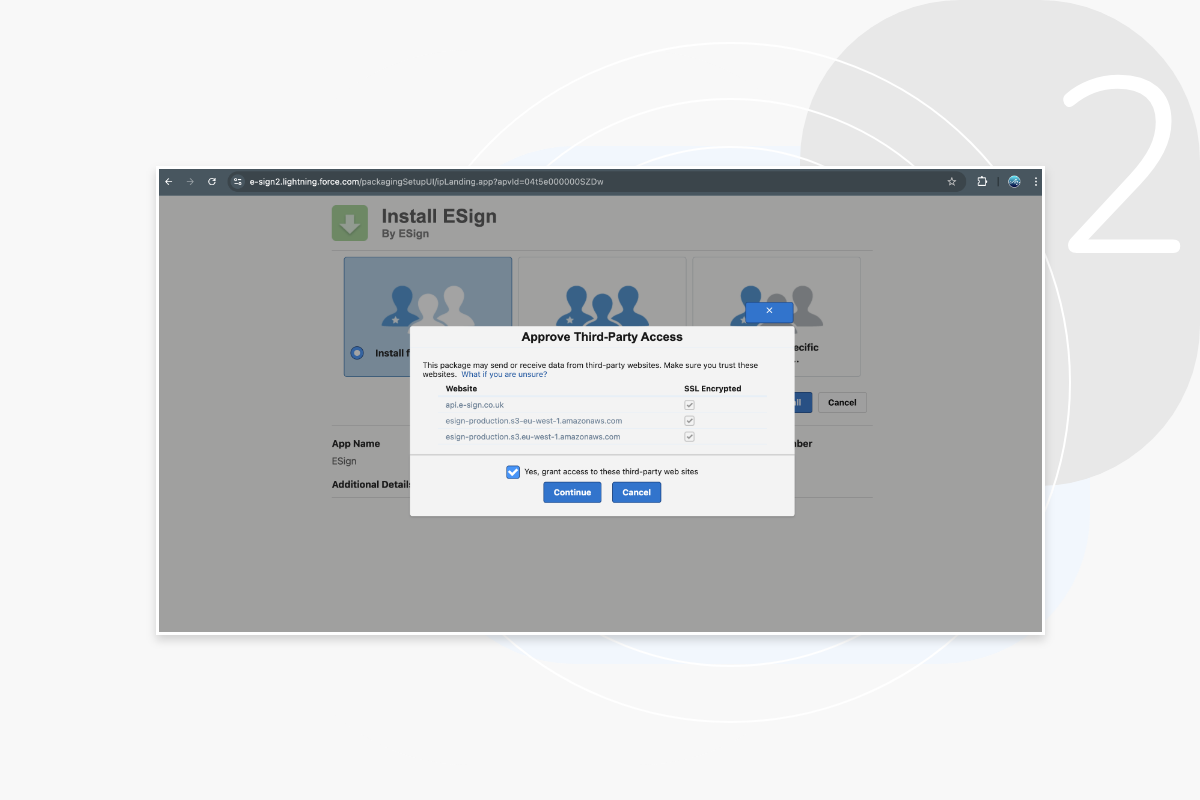
Here you will be prompted to the E-Sign Set up page. To authenticate your E-Sign account, click ‘Configure’.
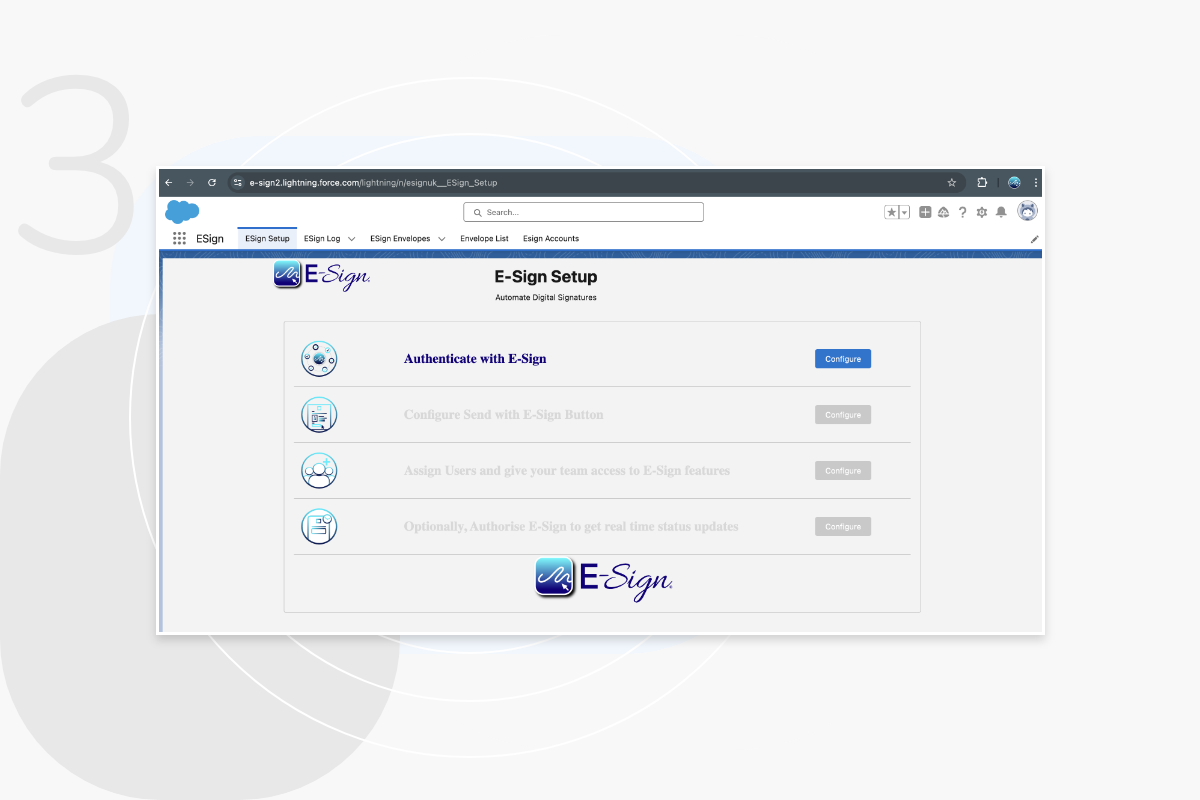
Here you will have the option to log in to your E-Sign account. A pop-up window will appear, letting you enter your login details.
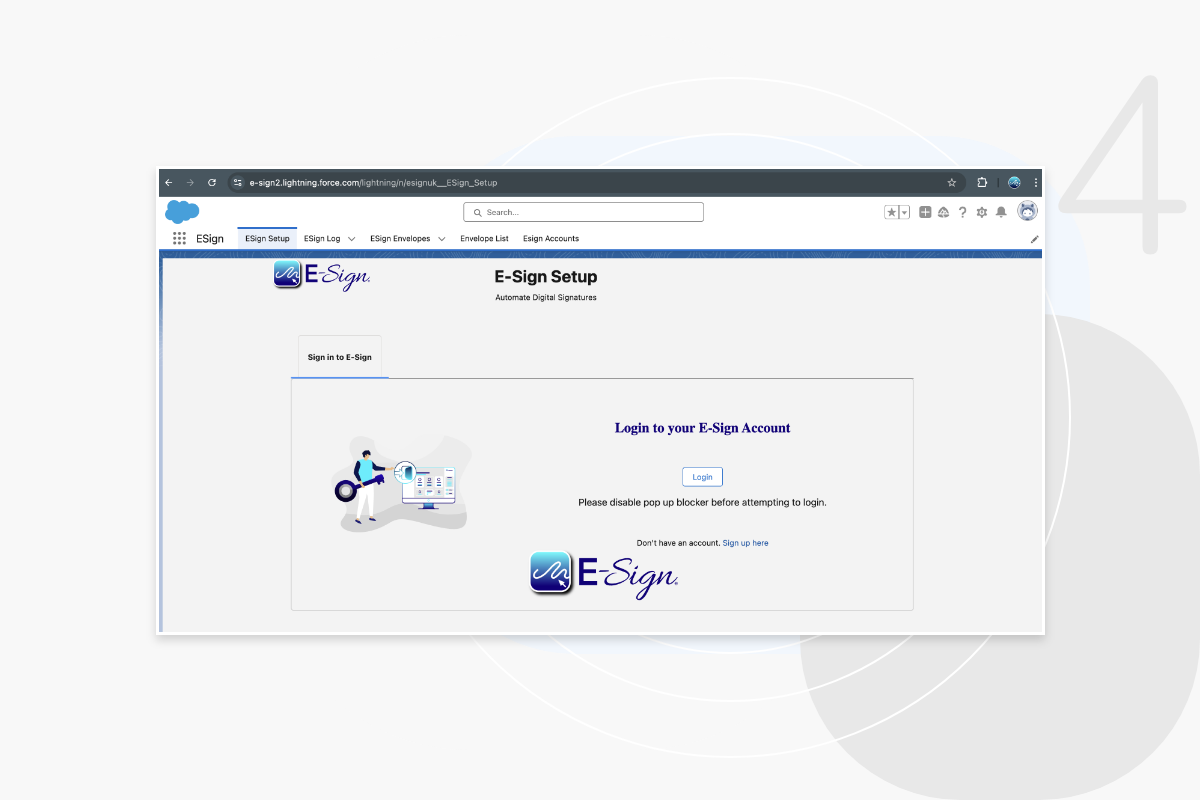
Once you have entered your E-Sign login details, click ‘Next Step’.
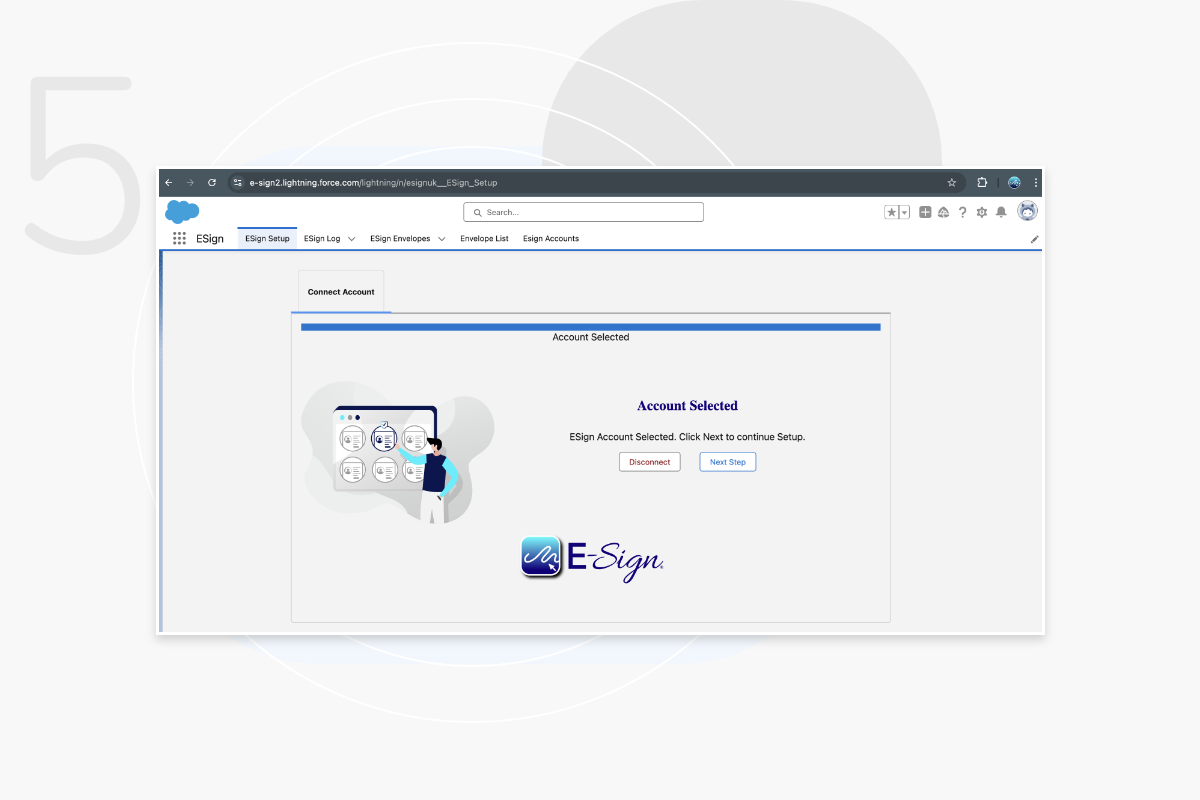
Click ‘Authorize’ to grant access to your E-Sign account.
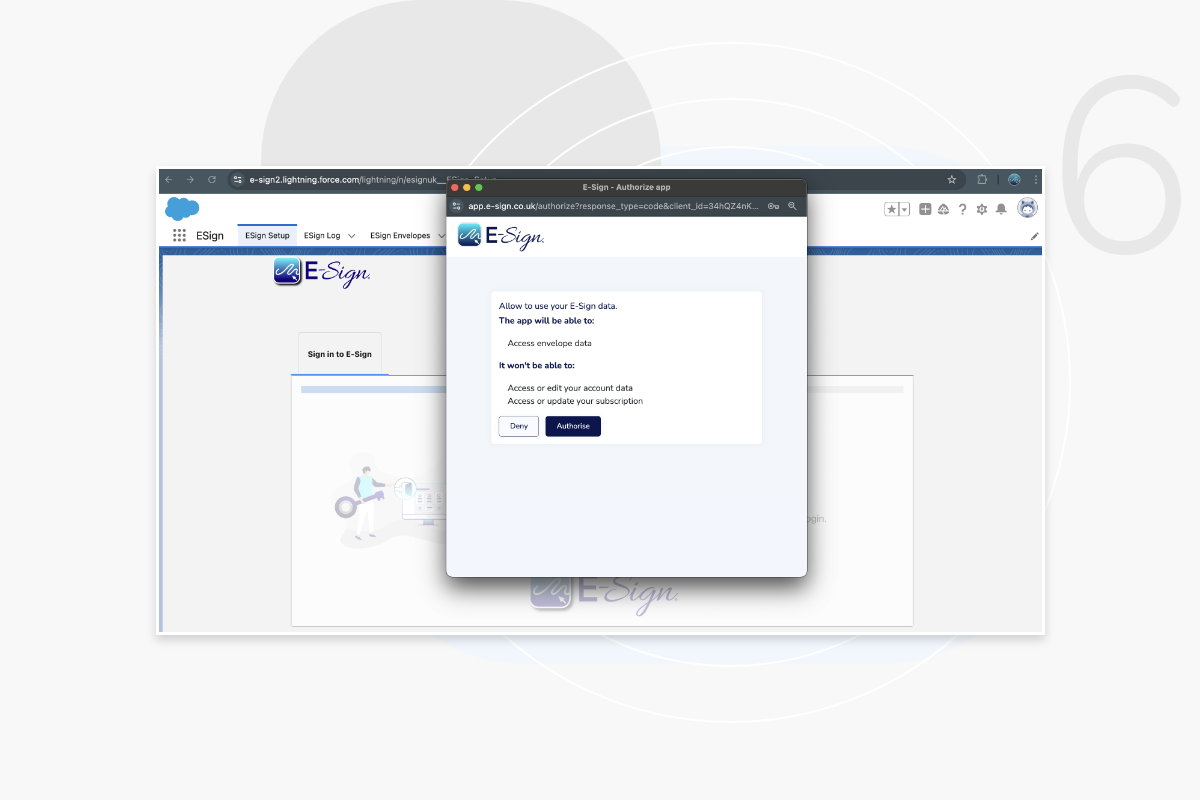
You will then be required to re-enter your Salesforce login details. You may also be required to verify your identity using an Authenticator app.
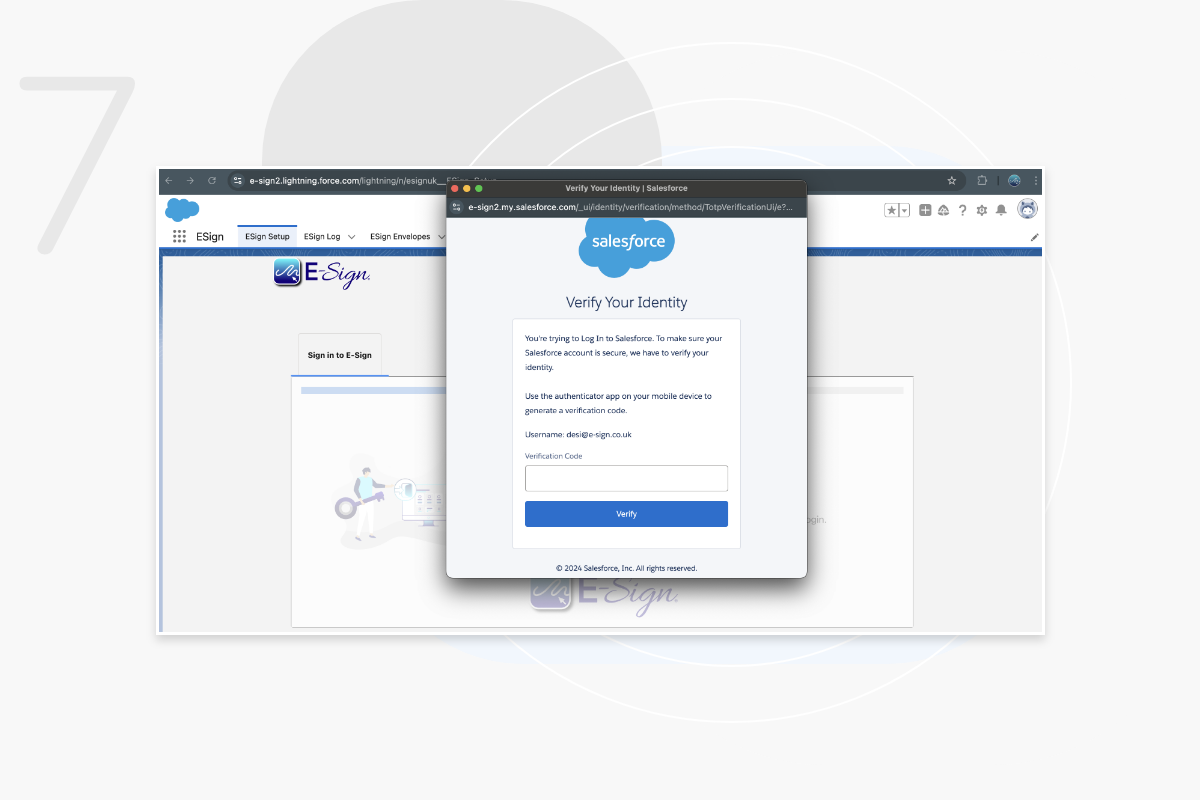
To enable the ‘Send with E-Sign’ button, click ‘Configure’.
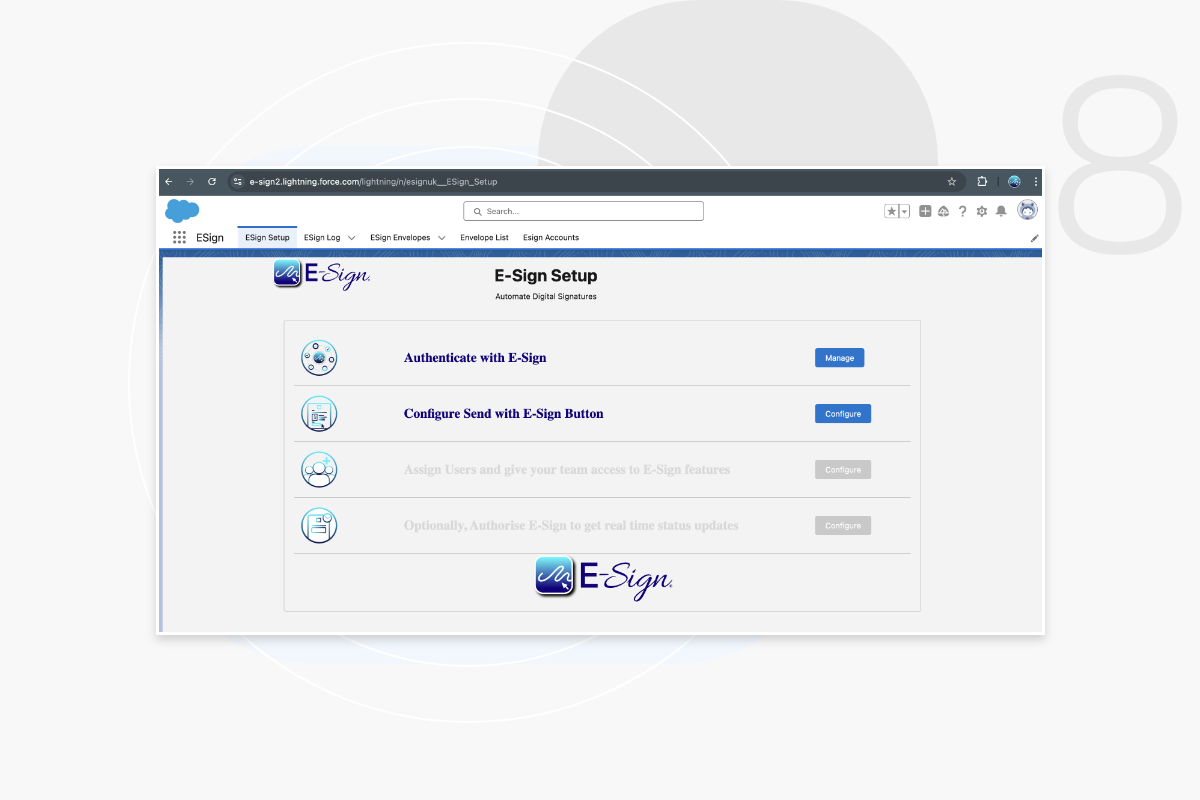
To complete this step and create a Remote Site in your Salesforce organization, click ‘Create Remote Site’.
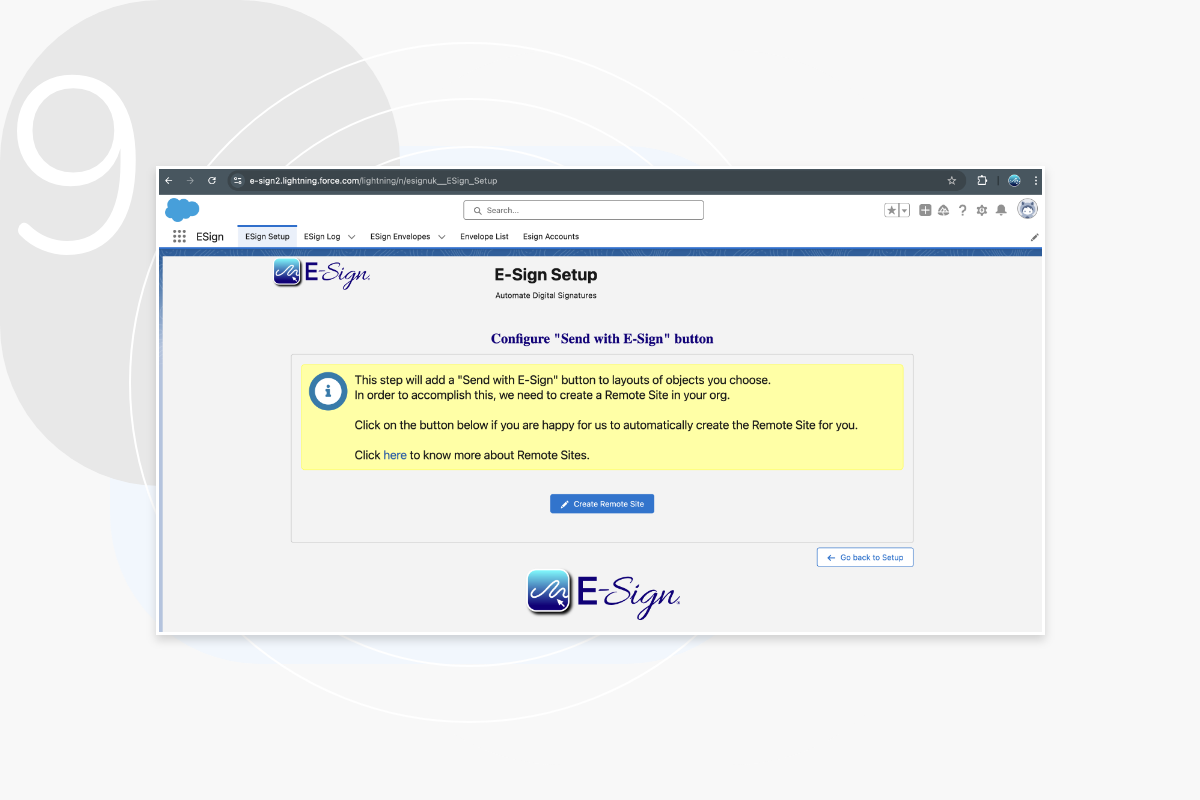
Once this is completed, you will be required to choose the Salesforce object in which the ‘Send with E-Sign’ button will appear.
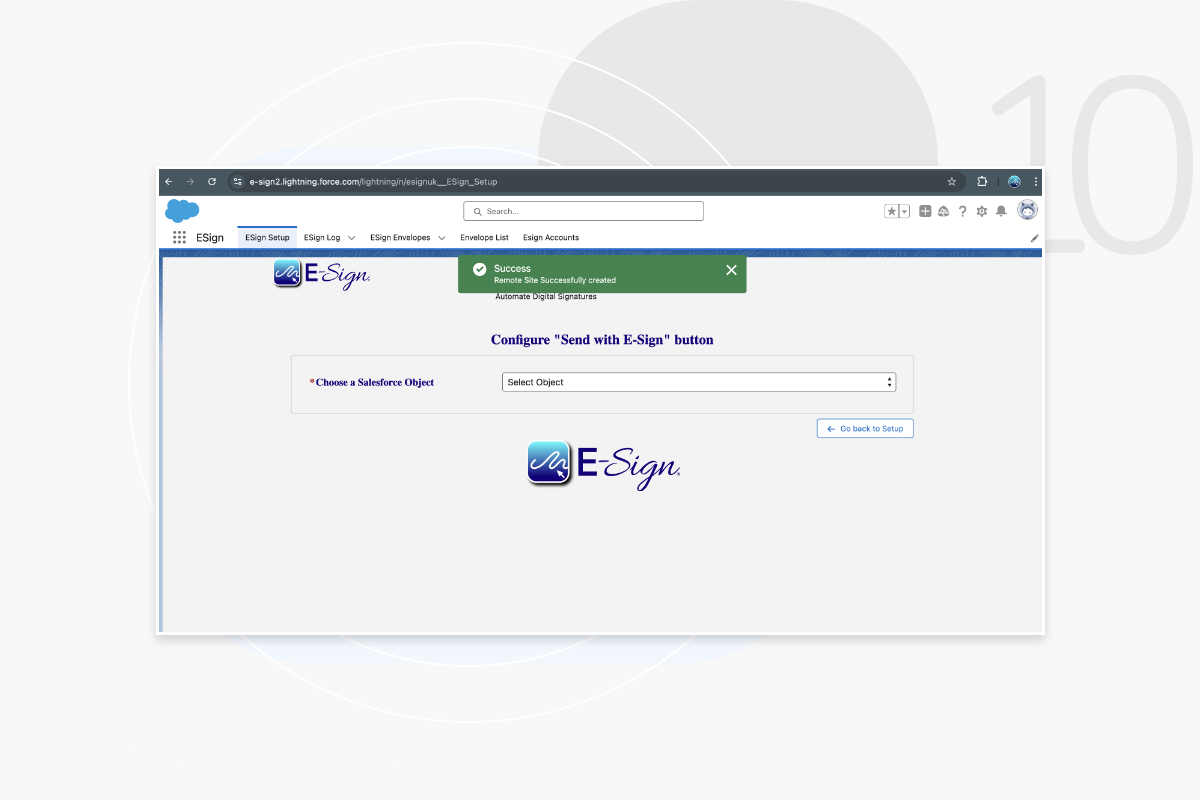
Please select the object(s) that you wish to have the Send with E-Sign button available. For example, opportunity leads and accounts.
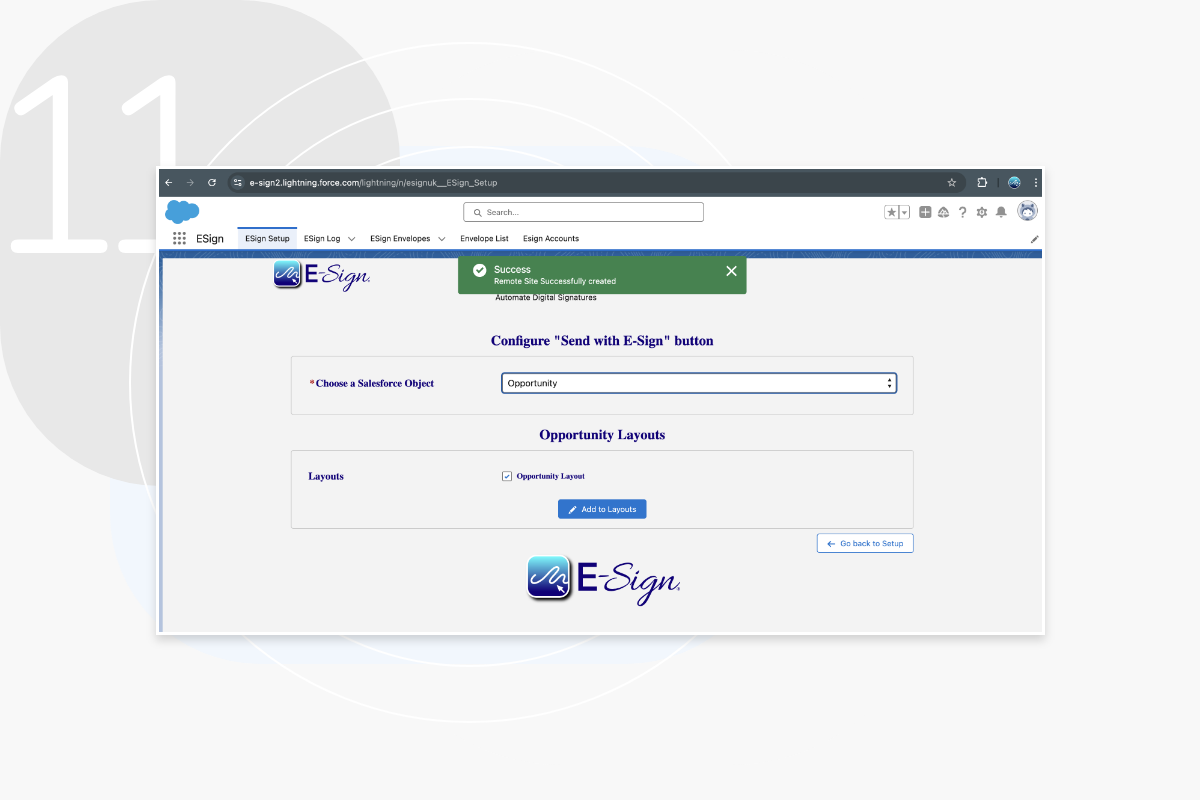
Once complete, you can assign users and give your team access to E-Sign features within their Salesforce account.
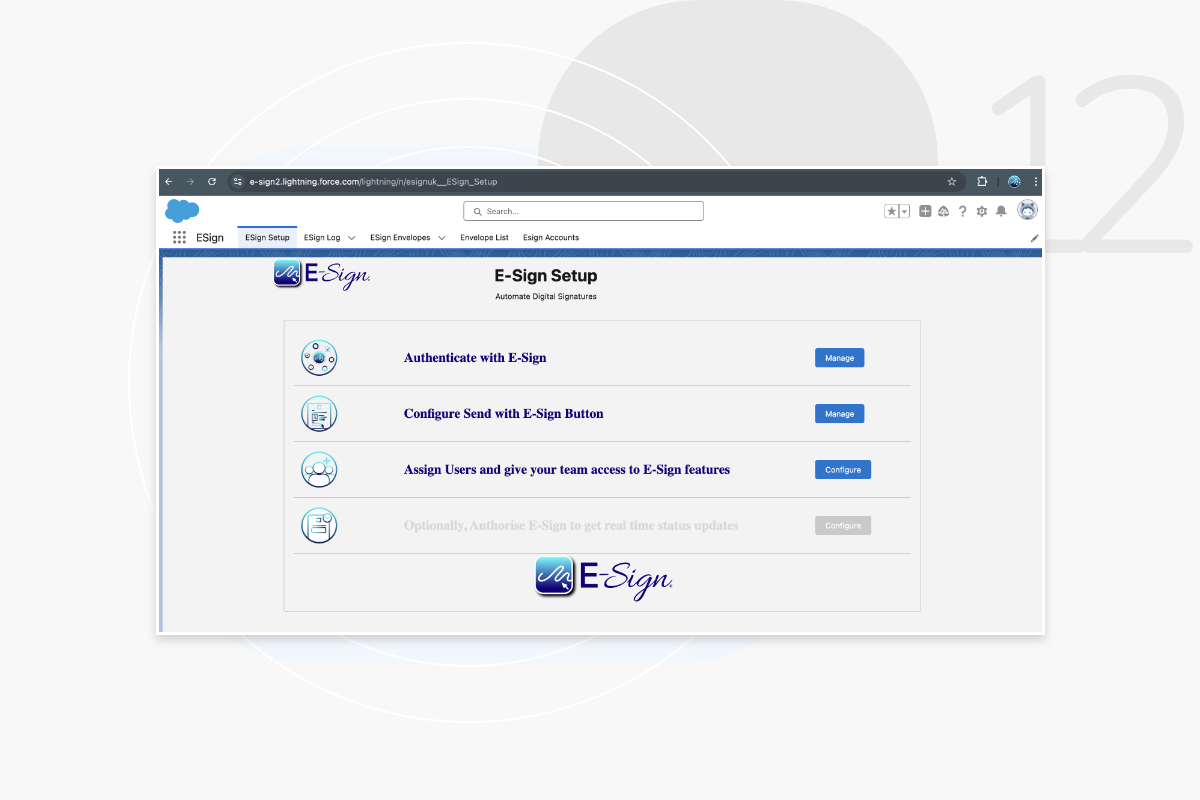
Here you can assign users and permissions for your team members.
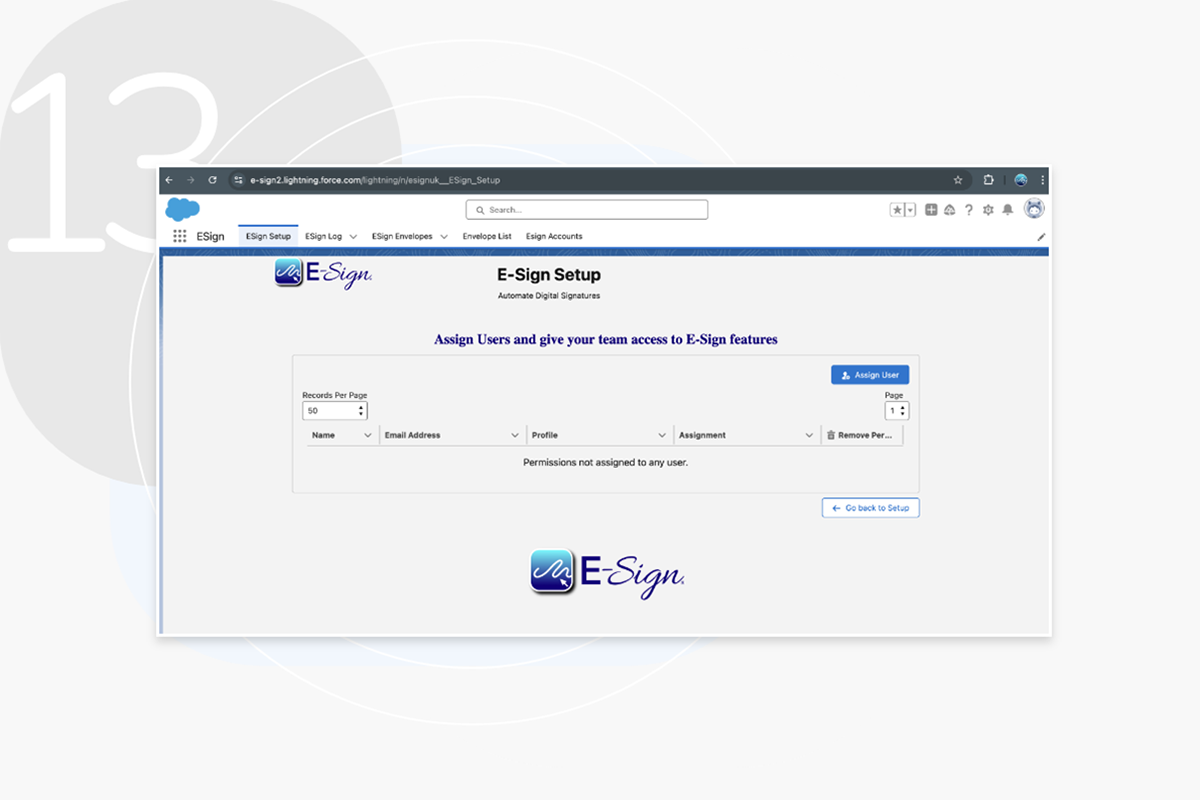
Click ‘Authorize E-Sign‘ to set up the Salesforce site. This will enable E-Sign to notify Salesforce of events in the document lifecycle.
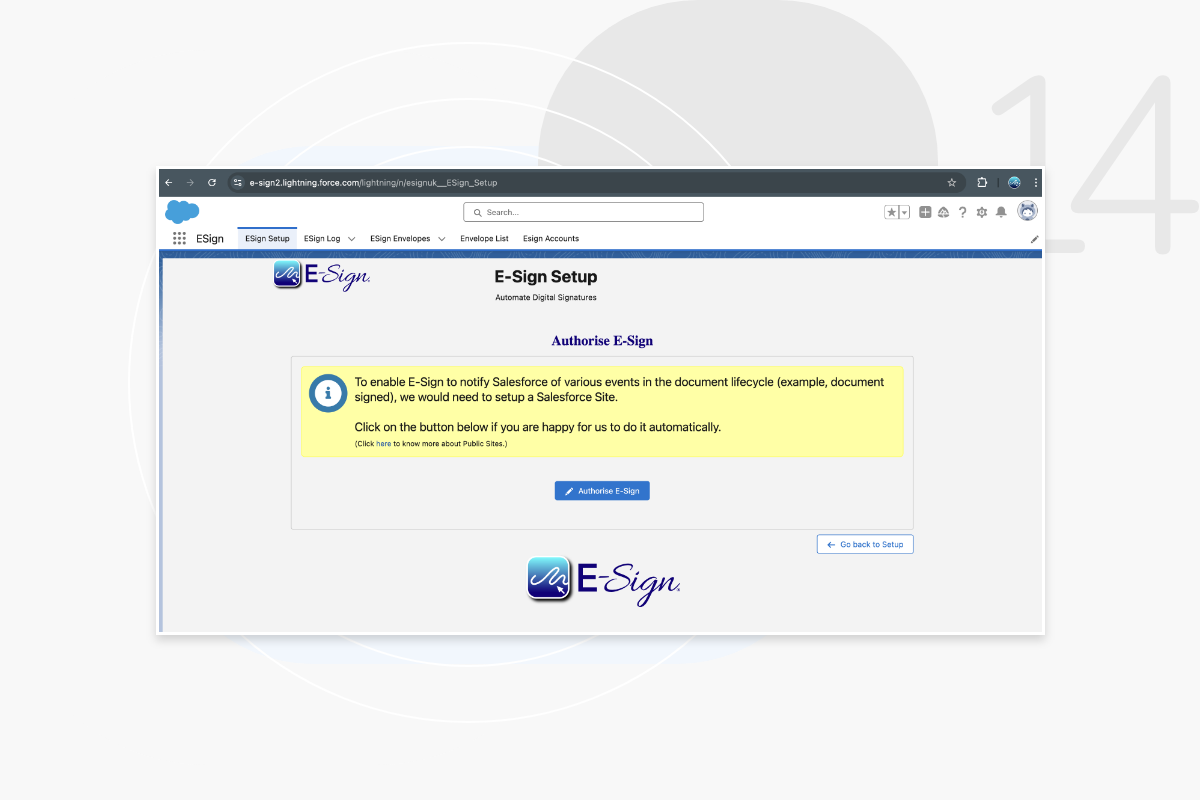
Now you will be set up, and ready to start sending documents for signature within Salesforce.
